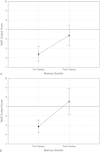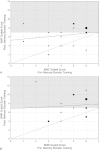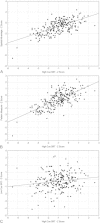Results from a National Central Auditory Processing Disorder Service: A Real-World Assessment of Diagnostic Practices and Remediation for Central Auditory Processing Disorder
- PMID: 27587910
- PMCID: PMC4910542
- DOI: 10.1055/s-0035-1564457
Results from a National Central Auditory Processing Disorder Service: A Real-World Assessment of Diagnostic Practices and Remediation for Central Auditory Processing Disorder
Abstract
This article describes the development and evaluation of a national service to diagnose and remediate central auditory processing disorder (CAPD). Data were gathered from 38 participating Australian Hearing centers over an 18-month period from 666 individuals age 6, 0 (years, months) to 24, 8 (median 9, 0). A total of 408 clients were diagnosed with either a spatial processing disorder (n = 130), a verbal memory deficit (n = 174), or a binaural integration deficit (n = 104). A hierarchical test protocol was used so not all children were assessed on all tests in the battery. One hundred fifty clients decided to proceed with deficit-specific training (LiSN & Learn or Memory Booster) and/or be fitted with a frequency modulation system. Families were provided with communication strategies targeted to a child's specific listening difficulties and goals. Outcomes were measured using repeat assessment of the relevant diagnostic test, as well as the Client Oriented Scale of Improvement measure and Listening Inventories for Education teacher questionnaire. Group analyses revealed significant improvements postremediation for all training/management options. Individual posttraining performance and results of outcome measures also are discussed.
Keywords: Central auditory processing disorder; deficit-specific auditory training; spatial processing disorder.
Conflict of interest statement
Figures












References
-
- Australian Hearing CAPD service offered by Australian Available at: http://www.hearing.com.au/capd-service-offered-australian-hearing/2013. Accessed September 10, 2015
-
- Musiek F, Chermak G. Vol. I. San Diego, CA: Plural Publishing; 2014. Preface; pp. xi–xiii.
-
- Cameron S, Dillon H. Vol. II. San Diego, CA: Plural Publishing; 2014. Remediation of spatial processing issues in central auditory processing disorder; pp. 201–224.
-
- Brown D K, Cameron S, Martin J S, Watson C, Dillon H. The North American Listening in Spatialized Noise-Sentences test (NA LiSN-S): normative data and test-retest reliability studies for adolescents and young adults. J Am Acad Audiol. 2010;21(10):629–641. - PubMed
-
- Cameron S, Brown D, Keith R, Martin J, Watson C, Dillon H. Development of the North American Listening in Spatialized Noise-Sentences test (NA LiSN-S): sentence equivalence, normative data, and test-retest reliability studies. J Am Acad Audiol. 2009;20(2):128–146. - PubMed
LinkOut - more resources
Full Text Sources
Other Literature Sources

